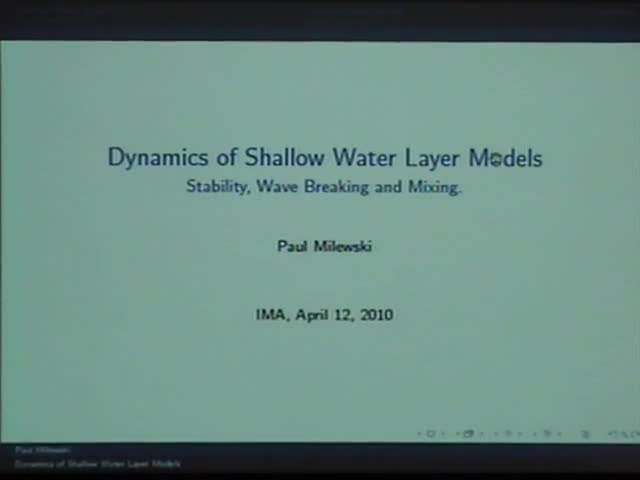Dynamics of shallow water layer models: Stability, wave breaking and mixing
Presenter
April 12, 2010
Keywords:
- Turbulent boundary layers
MSC:
- 76F40
Abstract
Keywords: Shallow water, Layer model,
hydraulic jumps, shocks, mixing, stability
Abstract: Shallow-fluid models are often the first step in modeling many geophysical flows. These models apply when the horizontal scales of motion are much larger than the vertical scales. For a single fluid layer with a free-surface, the shallow water approximation results in hyperbolic equations which are well understood and broadly applied. Generically, waves steepen and break creating hydraulic jumps which satisfy the PDEs in a weak sense. Physically one must ensure that certain conserved quantities - usually mass and momentum - are preserved across shocks. For the single layer case this results in a prediction of the small scale energy dissipation at the shock. In layered shallow water models the situation is complicated by at least two issues: that the flow may be shear unstable (the Kelvin-Helmholtz instability), and that breaking waves may mix the fluids. We shall discuss some physically motivated mathematical results on these issues.
